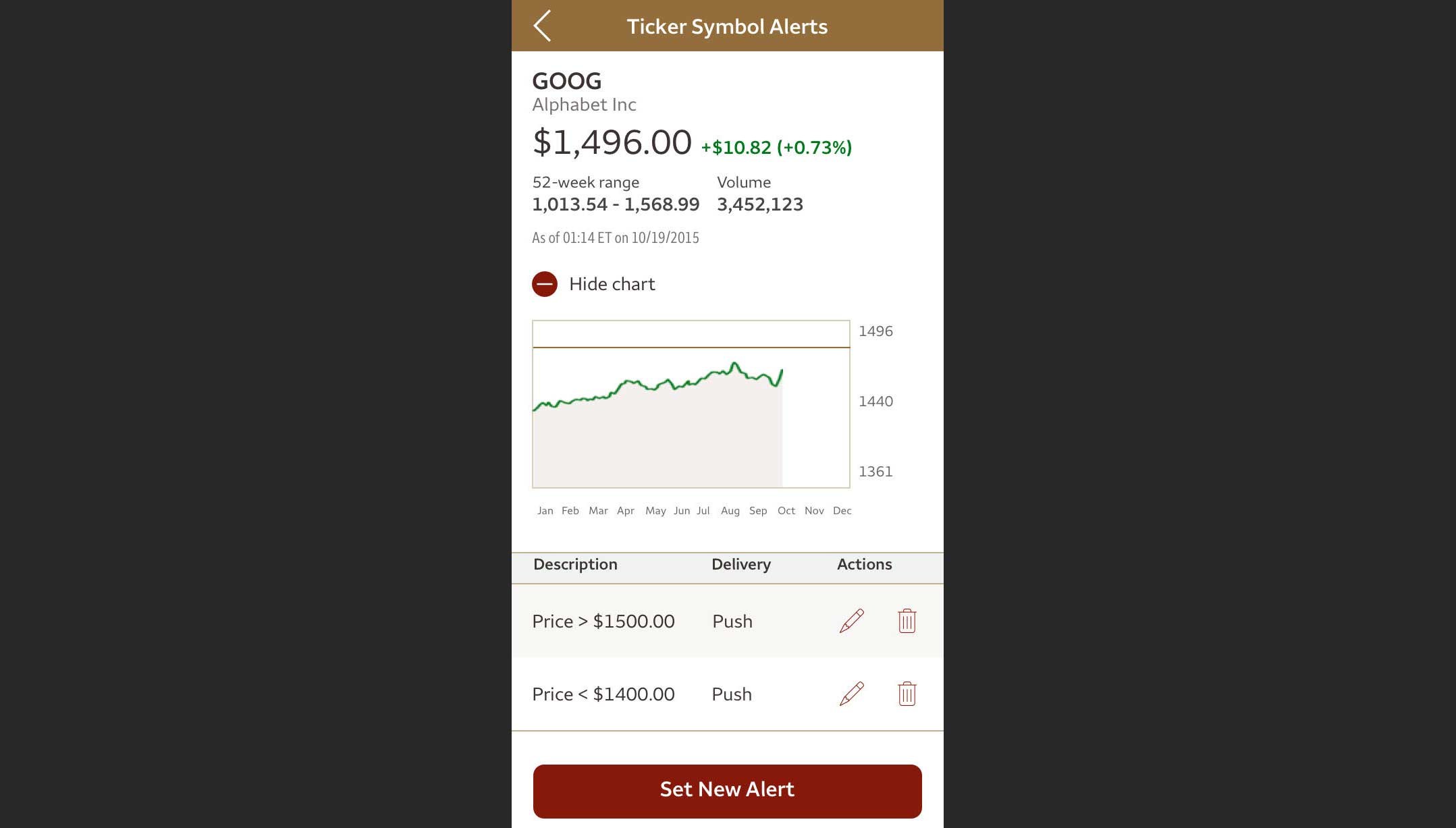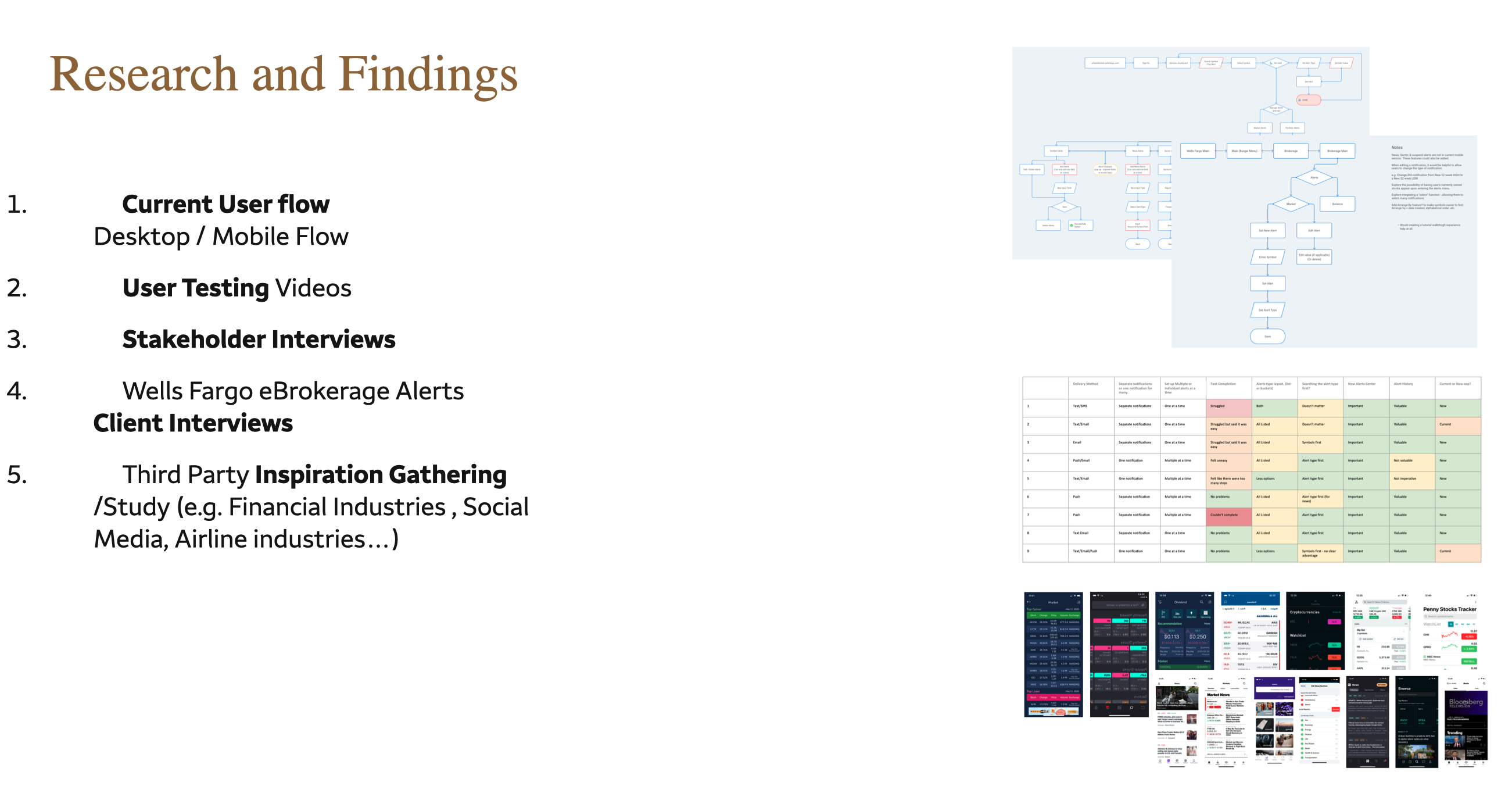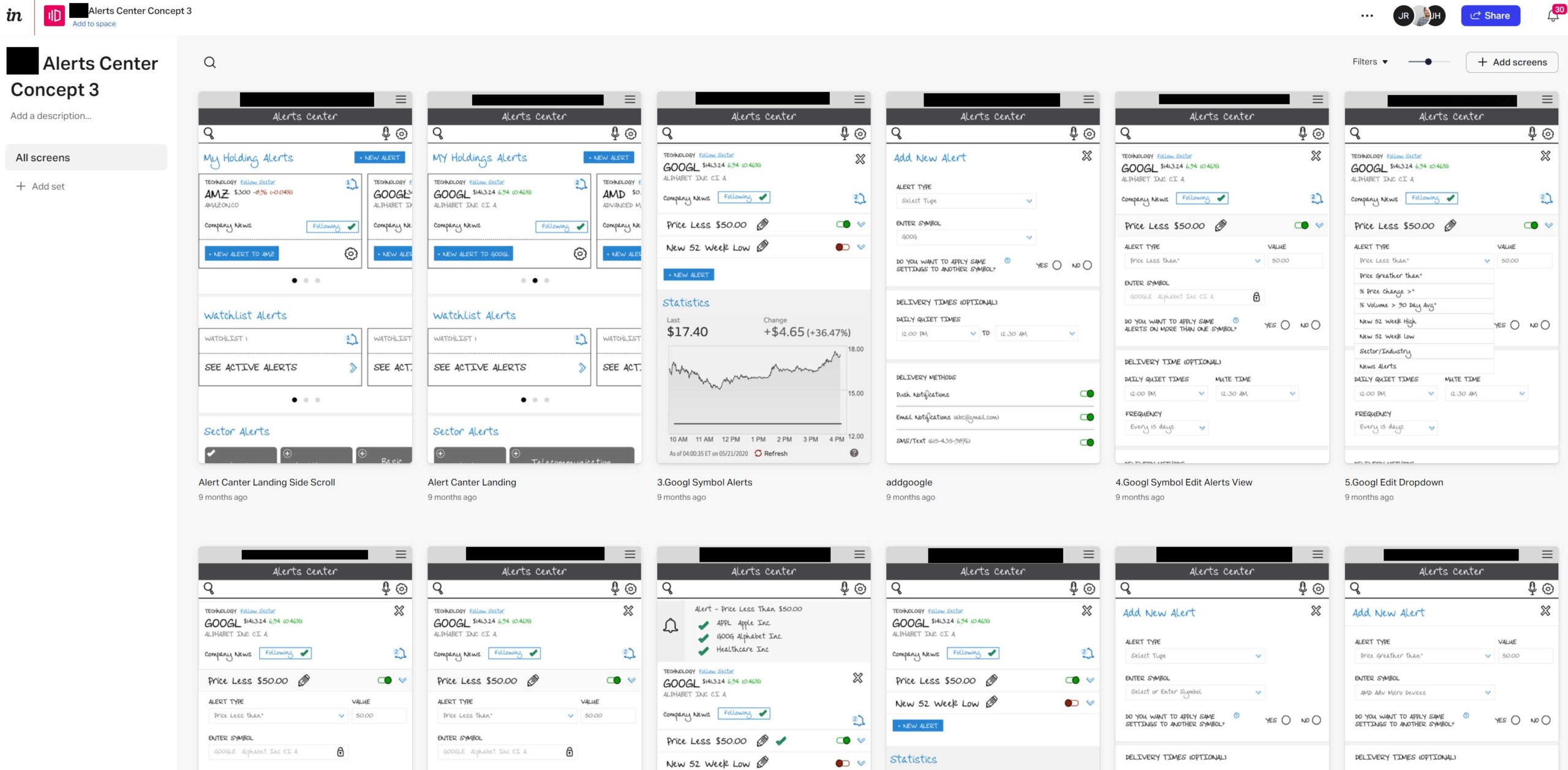Featured work
Wells Fargo
A total redesign of an outdated and unusable stock alerts center that’s purpose is to send notifications to users based on their custom configurations for both mobile and desktop. The challenge was designing a useful system with extremely strict and precise brand standards and limited technology scope.
Through a holistic, end-to-end approach, Jordan crafts connected solutions that choreograph meaningful interactions among customers, employees, and crews. These designs not only elevate the experience but also drive impactful business outcomes

Usability improvements
Margin increase
SolutionS and Methods
- Industry Research
- Sitemap & User Flows
- Remote Sketching & Wireframing
- Hi-fi Prototyping
- OTS Guerilla Testing Methodology
THE STRATEGIC DESIGN PATH

Leading a team of designers, Jordan devised an extensive research and design plan that started with an analysis of the experience and a usability test with real users. From, there the team collected a list of needs and separated them into core, latent, and extreme categories to prioritize recommendations

Due to the COVID-19 pandemic, every company needed to adjust to the new way of working remotely. We organized all interviews and needs gathering exercises over the phone and video sessions. Jordan led the team and 15+ stakeholders in a real time design studio hosted on Invision's realtime wireframing software. The outcome of that work led to a prototype designed in Figma which was then tested remotely through usertesting.com. The results of those tests led to the next round of prototyping.

The design effort was a series of double diamond divergent/convergent events to design a better experience to control notifications and the triggers that fire them. Jordan led the effort to test the designs with real users in the RITE (Rapid Iterative Testing & Evaluation) style, a method where iterations happen immediately after every testing session, then repeated until all usability issues are cleared for the remaining users in the testing pool. After the RITE study, the team then polished the final designs to be 100% ADA compliant for both mobile and desktop.